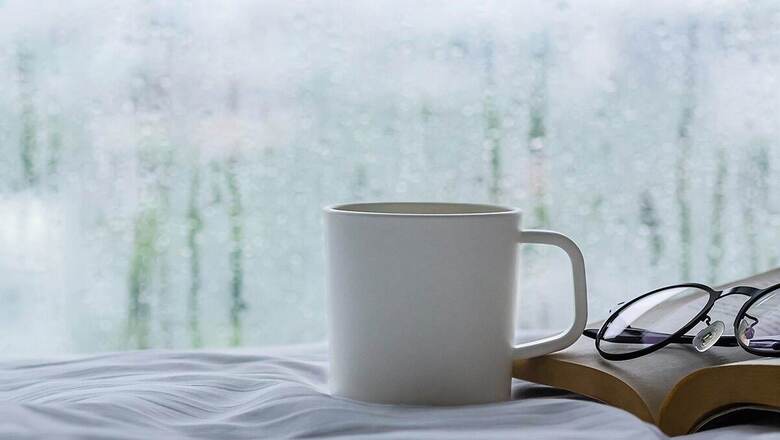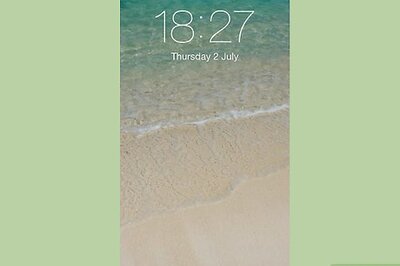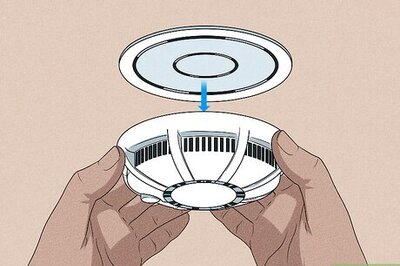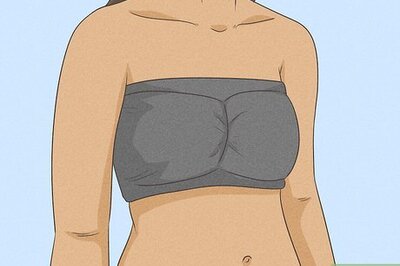
views
It’s easy to ignore hydration during the monsoons – the days are cooler, there’s always a breeze flowing, and the intoxicating smell of petrichor perfumes the air with each cooling shower. We naturally associate ease and comfort with these days, instead of the heat, sweat and thirst of the summer.
But the monsoon brings its own challenges to hydration – the inability to recognise when we’re thirsty and dehydrated, because the weather is so nice! Of course, at some point, we’ll get thirsty enough to reach for water. The same cannot be said of children and vulnerable adults – both these groups find it hard to recognise and communicate their symptoms. Moreover, since symptoms of dehydration are so commonplace and easy to miss, children and the elderly can be dehydrated for a while, before someone notices.
Recognising Dehydration
Mild dehydration (1-3% body weight loss) presents as mild thirst and a dry mouth, something most of us fail to notice. If we continue to lose water (4-6% body weight loss), we begin to feel tired and lightheaded, and our lips begin to feel dry. At this time, if we urinate, we’d notice that our urine is bright yellow. If severely dehydrated (>6% body weight loss), we experience raging thirst, severe headaches, a fast heartbeat and fatigue. At this time, urine turns a brownish yellow. When we lose more than 10% of our body weight, we can lose consciousness, and are at a significant risk of death from dehydration.
Most of us never get past the 6% stage on an everyday basis as our thirst makes us drink water. But for infants, young children, and vulnerable elders, there are specific symptoms to watch for.
Infants, for instance, have no way of signalling to you that they are dehydrated. One of the first reliable signs, however, is a dry diaper. If an infant hasn’t wet his diaper in over 6 hours, if his mouth feels dry, and if the eyes and soft spots on the skull appear slightly sunken, you need to administer fluids, quickly. For toddlers, dehydration shows up as fatigue and irritability, along with tearless crying. They appear listless, and their eyes, cheeks and soft spots feel sunken.
For elders in the family, the problem looks a little different. As we age, our body’s fluid reserve becomes smaller, and our thirst sense becomes less acute. Additionally, those elders who are suffering from chronic ailments are often on medication that can be diuretic (causes increased urination). Often, the disease itself can cause many of the symptoms of dehydration, making it harder to spot when one is actually dehydrated. Sometimes, the only reliable way to make sure that the elderly are getting enough water, is to track their water intake.
Monsoon specific diseases
It’s the monsoon. Let’s face it, at some point, we’re going to give into our cravings for street food, and the chutneys that come with those samosas and pakoras and idlis and chaats. In a near annual ritual, most of us get into enormous trouble because of our love for street food.
Severe, acute diarrhoea that comes on suddenly and violently, can cause a tremendous loss of water and electrolytes in a short amount of time. If one has vomiting along with diarrhoea, we lose even more fluids and minerals.
High fevers are another common cause of dehydration, and these too, become common during the monsoons because of an increased incidence of infections. If you’ve been unlucky enough to have a combination of a fever, diarrhoea and vomiting, you really, really need to watch your intake of water and essential minerals, also known as electrolytes.
Electrolytes are essential minerals, like sodium, calcium, and potassium, that help our bodies regulate chemical reactions, maintain the balance between fluids inside and outside our cells, and more. On a normal day, we lose electrolytes through our sweat and urine, and replace them through our diet. However, when dehydration has already set in, replacing these fluids and electrolytes takes on added urgency.
The best, most reliable and proven way to rehydrate is through Oral Rehydration Solutions (ORS). ORS has reliably shown life-saving effects in conditions involving dehydration since it was discovered in the 1960s. WHO, through various studies over the years, has refined and perfected the formula for rehydration: the perfect ratio of salts, minerals and electrolytes our bodies need to recover from dehydration.
In India, this formulation has been available since 1972, in the form of Electral, which we’ve all had in our family first aid kits. Electral is synonymous with ORS in India. Electral has been everyone’s back pocket remedy for keeping our families hydrated and safe, especially while waiting to see the doctor.
Hydration For Health: Arming You With The Right Information
To address the lack of awareness about dehydration, Electral and the News18 Network launched the Hydration for Health initiative in 2022. It serves as a fountainhead of knowledge and resources aimed at combating dehydration. Season 2, in particular, focuses on children, arming parents with an indispensable toolkit for their well-being. Electral, synonymous with ORS in India, extends its legacy in this venture and reinforces its commitment to being an educator and a harbinger of health.
Head over to Hydration for Health and educate yourself on how you can make hydration a non-issue in your family. Use what you learn to create a two pronged strategy: Prevention on the one hand, where you can set targets for everyone’s water intake and keep an eye on symptoms of the very young and the elderly. Precaution on the other hand, where you already have your first line of defence in your family first aid kit – Electral!


















Comments
0 comment